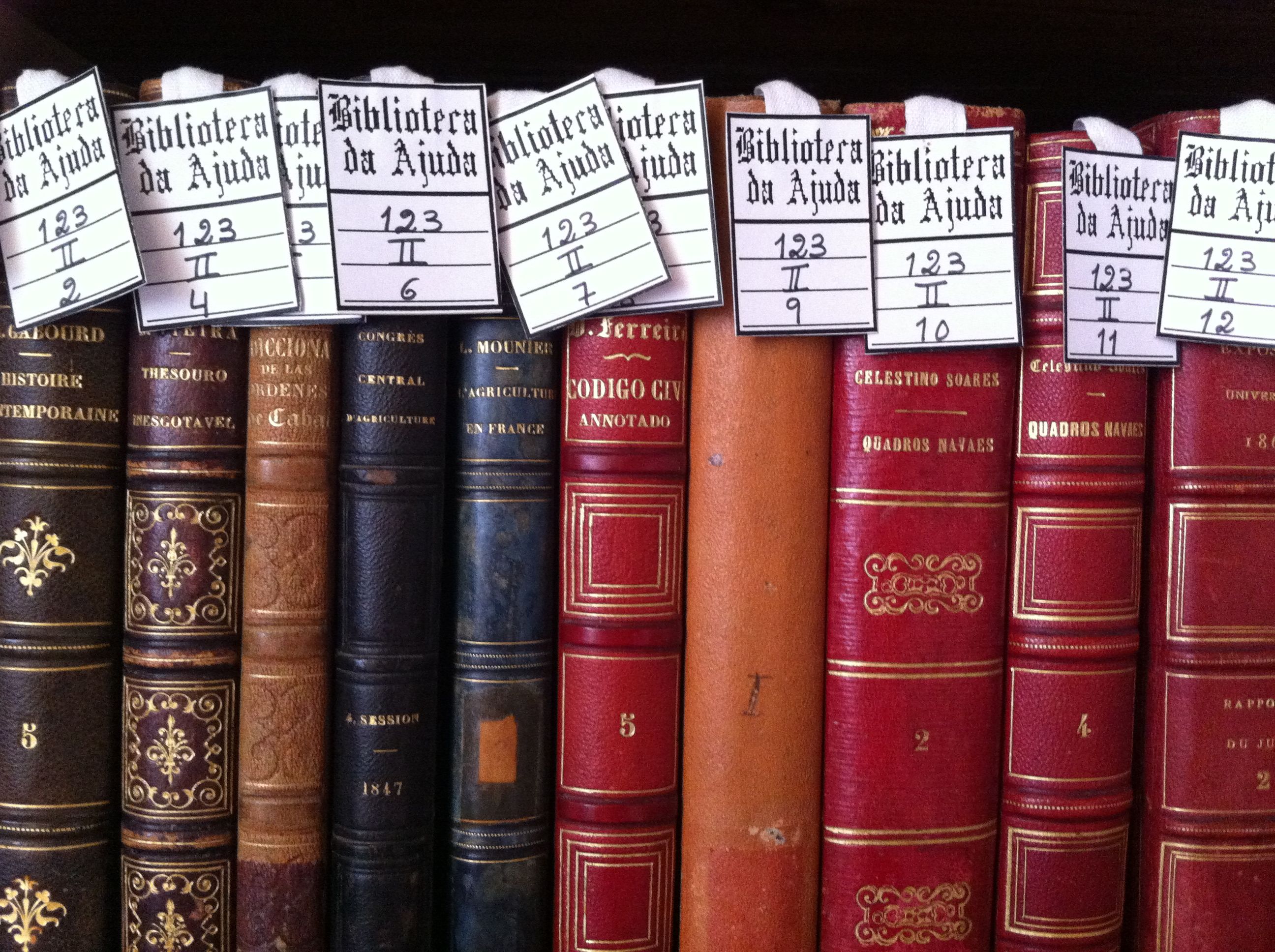This is one of the oldest Libraries in Portugal for both its nature and amount of items and its main purpose is the conservation, study and dissemination of its document acquis. It has been located in a wing of its own at the Ajuda Palace since 1880.
Of the five rooms that form the oldest area of the Library, the first three are open to the public, and stand out for both their size and furniture, in addition to the fresco-decorated ceilings with "trompe-l'oeil" technique by José Pereira Júnior. The library features different glass displays showcasing a documentary selection of valuable handwritten and printed species is displayed. It also includes a set of pieces and artefacts from the 18th and 19th centuries from the former binding workshop of the Royal Library.
The origin of the Ajuda Library dates back to the 15th century, like the designation Royal Library, its ancient name. Installed after the 16th century in the west tower of Paço da Ribeira, it was substantially enriched by D. João V and lost most of its rich assets in the 1755 earthquake and was reinstalled in houses attached to the Paço de Madeira (Royal Barracks), in Ajuda.
In 1811, following the French invasions, the Library was transferred to Rio de Janeiro, close to the Court, forming the initial nucleus of the current National Library of Brazil. In 1821, the nucleus of manuscripts of the Royal Household returned to Portugal and included also the library of the Society of Jesus (Casa Professa de São Roque and Colégio Santo Antão), and of the Congregation of the Oratory and Necessidades Palace.
Administered directly by the Royal House until the proclamation of the Republic, its librarians were appointment by the king, chosen from among his secretaries, such as Alexandre Herculano (1839-77), or trusted persons, such as Magalhães Coutinho (1877-95) and Ramalho Ortigão (1895-1911). After the proclamation of the Republic, Jordão de Freitas (1918-36) was appointed the first director.
The Ajuda Library catalogue, updated daily, brings together up to 19 thousand bibliographic records, from the different collections of its acquis (manuscripts and printed), such as photography, iconography, cartography, leaflets (Portuguese and foreign), genealogies, works of medicine, architecture, among others. The catalogue can be found at: http://bibliotecas.patrimoniocultural.pt/.


